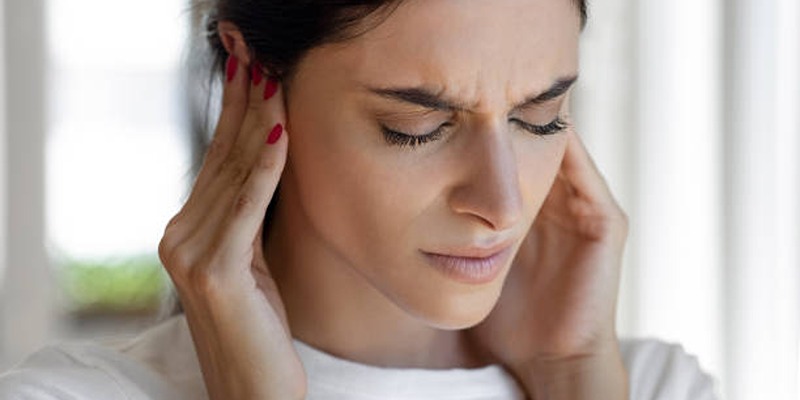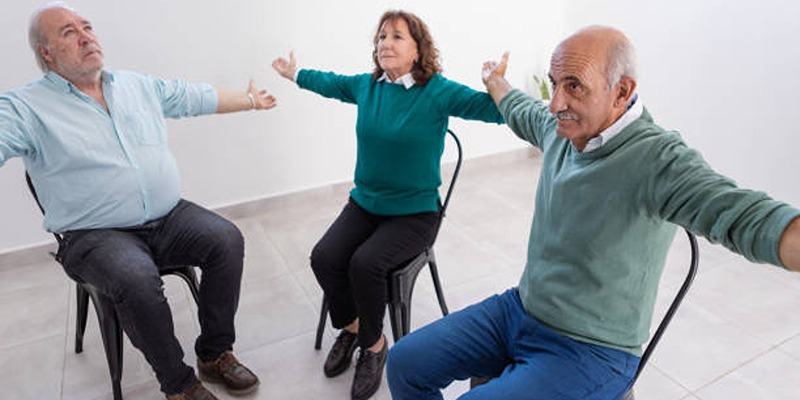Anxiety and depression are common mental health issues that affect millions of people worldwide. While therapy and medication are often the first-line treatments, exercise has been proven to play a significant role in improving mental health. Engaging in regular physical activity can help reduce the symptoms of anxiety and depression by promoting the release of feel-good hormones, improving sleep, and providing a sense of accomplishment.
In this article, well explore seven of the best exercises that can help alleviate anxiety and depression. These exercises are not only good for the body but also for the mind.
7 Best Exercises for Anxiety and Depression
Whether you're a beginner or a seasoned fitness enthusiast, these exercises can be adapted to fit any level of experience. Incorporating these activities into your daily routine can lead to significant improvements in your mental well-being.
1. Running
Running is one of the most effective exercises for managing anxiety and depression. As a form of aerobic exercise, running increases heart rate, which helps release endorphins, often referred to as "feel-good" hormones. These endorphins create a sense of euphoria, also known as the "runner's high."
Running can also serve as a form of meditation in motion. The rhythmic pattern of your footsteps and breathing helps to quiet the mind and reduce stress. If you're new to running, start slowperhaps with a mix of walking and joggingand gradually build up your endurance.
Tips for beginners:
- Set small, achievable goals.
- Run in a peaceful, natural environment.
- Consider joining a local running group for social support.
2. Yoga
Yoga has long been celebrated for its ability to promote mental clarity and relaxation. Through a combination of physical postures, controlled breathing, and meditation, yoga helps calm the nervous system and reduce stress levels. For individuals struggling with anxiety or depression, yoga can be a powerful tool to balance emotional health.
Specific yoga practices, such as mindfulness and deep breathing, activate the bodys parasympathetic nervous system, leading to a relaxation response. Poses that open the chest, such as the "Childs Pose" and "Bridge Pose," can also help release tension and promote feelings of safety and comfort.
Popular Yoga Practices:
- Hatha Yoga: Focuses on gentle movements and breathwork.
- Restorative Yoga: Uses props to fully support the body and encourage relaxation.
3. Hiking
Hiking combines the mental health benefits of physical exercise with the therapeutic effects of being in nature. Numerous studies have shown that spending time in green spaces can reduce feelings of anxiety, improve mood, and lower levels of the stress hormone cortisol.
The physical effort of hiking also helps release endorphins, while the tranquility of nature provides a break from the stresses of everyday life. Hiking on trails surrounded by trees, rivers, and wildlife offers an opportunity to practice mindfulness and reconnect with the present moment.
How to incorporate hiking:
- Find local hiking trails and explore them on weekends.
- Invite friends or join a hiking group for a more social experience.
- Start with shorter, easier trails and gradually build up to longer hikes.
4. Weightlifting
Strength training, such as weightlifting, is another excellent way to combat anxiety and depression. While weightlifting is often associated with building physical strength, it also has numerous psychological benefits. Lifting weights increases the production of neurotransmitters like dopamine and serotonin, which play a crucial role in mood regulation.
Weightlifting can also boost confidence and self-esteem. The sense of achievement that comes with lifting heavier weights over time can help alleviate feelings of inadequacy and negativity often associated with depression.
5. Taking Long Walks
Walking is one of the simplest yet most effective ways to improve mental health. Its a low-impact exercise that can be done almost anywhere, and it's accessible to people of all fitness levels. Taking long walks, especially in nature, helps clear the mind, reduce anxiety, and improve mood.
Walking gives individuals the chance to process their thoughts, release built-up tension, and focus on the present moment. Many find that a daily walk can significantly improve their outlook on life.
Suggestions for Walking:
- Walk in a park or near water for additional calming effects.
- Listen to calming music or nature sounds while walking.
- Aim for at least 30 minutes of walking daily.
6. Swimming 
Swimming is a full-body workout that not only strengthens muscles but also helps alleviate anxiety and depression. Being in the water can have a calming effect on the mind and body. Swimming promotes the release of endorphins and lowers stress levels, making it an excellent choice for those dealing with mental health challenges.
The gentle resistance provided by water also offers a low-impact environment for those with physical limitations or joint pain. Swimming in a pool, lake, or ocean can help individuals feel refreshed and rejuvenated.
Benefits of Swimming:
- Soothes the mind with the rhythmic motion of swimming strokes.
- Provides a sense of weightlessness, which can be relaxing.
- Offers an opportunity for social interaction in group swimming settings.
7. Dancing
Dancing is not only a fun way to stay physically fit but also a powerful method for improving mental health. Movement, music, and rhythm combine to create a therapeutic experience that can lift the mood and reduce anxiety. Whether its a formal dance class or simply dancing at home to your favorite music, dancing helps release emotions and can make you feel more connected to your body.
Dancing also encourages social interaction, which is essential for mental well-being. The combination of exercise, creativity, and social engagement makes dancing one of the best activities for mental health.
The Benefits of Exercises for Anxiety and Depression
Here are the Benefits of Exercises for Anxiety and Depression in bullet points:
- Releases Endorphins: Exercise stimulates the production of endorphins, the body's natural mood elevators, which help reduce anxiety and depression.
- Reduces Stress: Physical activity lowers levels of the stress hormone cortisol, promoting a calmer and more relaxed state of mind.
- Provides a Healthy Distraction: Exercise offers a break from negative thoughts and worries, allowing you to focus on physical movement and relaxation.
- Promotes Social Interaction: Group exercises or activities like dancing or running clubs provide opportunities to connect with others, reducing feelings of isolation.
- Enhances Cognitive Function: Regular exercise improves brain function, concentration, and decision-making, which can be impaired by anxiety and depression.
- Balances Neurotransmitters: Physical activity helps balance chemicals like serotonin and dopamine in the brain, which are important for regulating mood.
Conclusion
Exercise is a simple yet effective way to improve mental health and well-being. Incorporating different types of physical activity, such as hiking, weightlifting, walking, swimming, and dancing, can have significant benefits for those dealing with anxiety or depression. Regular exercise not only improves physical fitness but also releases feel-good hormones, reduces stress levels, promotes social interaction, and enhances cognitive function.








